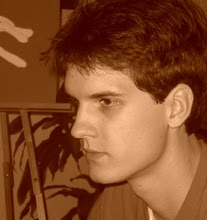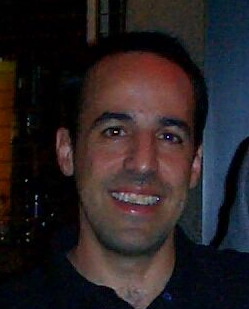How To Measure and Maximize Creative Thoughts
Alexandra Carmichael
February 13, 2010
Do you want to be more creative? Justin Wehr does, and he sent in this question for the QS advisory board.
———-
Name: Justin Wehr
Purpose: My objective is to measure creative thoughts so I can figure out how to maximize them.
Variables tracked:
I have some variables related to this, but not enough. For example, I have a notebook I carry around with me so I can write something down every time I think of/hear something interesting that I want to remember. So I think I could crudely measure creative thoughts with something like “number of lines written in notebook per unit time.”
However, I do not track time spent reading or which lines written in
the notebook occurred during reading. But my hope is that I could set
up an experiment that would not be too complicated — that is the
advice I would like from the QS advisors.
Question:
How do I set up an experiment to determine when I have have the most
creative thoughts … when I am reading, when I am thinking, or when I do
intermittent periods of reading and thinking? What should I measure,
how should I measure it, is it practical, and how do I analyze the
results?
See what Gary Wolf of Quantified Self and Gary King of Harvard had to say…
———-
Gary Wolf’s comments:
 I have one simple suggestion that might make an answer
I have one simple suggestion that might make an answer
more valuable.
That is that Justin should line his notebook with three
narrow columns at the right hand margin of each page. The columns
should be labeled: reading, thinking, mixed. When he writes down an
interesting thought, he would put a check in one of the columns. After
three days, he would see which column had the most checks. This will
give him a crude measure of what he is doing when he decides to write
something down in his notebook.
Then he should think about what this evidence suggests, and what the NEXT stage of the experiment should be. That is a good moment to describe it and ask the question. So he asks
the question as somebody already embarked on a self-experiment, which
makes it more interesting and suggestive.
———-
Justin’s reply:
I am thinking about taking the experiment in a different direction. I know Seth Roberts always says to keep it simple and advises against testing too many variables, but what can I say, I am a
rebel.
Instead of just testing which combination of reading/thinking optimizes how many lines I write in my notebook (which I have decided is a poor proxy for creativity anyway) I am thinking of creating a spreadsheet with a list of variables and filling it out every time (or most times) I feel like I have a steady stream of interesting thoughts. This way instead of testing one variable I can test many and compare effect sizes.
I do not know if the advisory board is still available for advice, but if so, I would love to receive feedback on the following rough plan:
The dependent variable would be a subjective 1-10 rating of how creative I feel.
Some other subjective 1-10 ratings I propose to collect are the following:
- How awake/alert I feel.
- How bored I felt immediately before stream of thoughts.
- Mood.
- Day’s food quality.
- Day’s food quantity.
Along with the following controls:
- Time of day.
- Location.
- Concurrent activities (reading, writing, web browsing, eating, conversating, driving, listening to music, etc.).
- Exercise minutes today.
- Hours sleep last night.
- Presence of other people (# and whom (friends, coworkers, family, etc.))
———-
Gary King’s answer:
 1. You shouldn’t get the idea that you should collect fewer variables. The more outcome (dependent) variables you have time to collect the better. The problem comes when designing an experiment with more treatment arms, since each of these requires more
1. You shouldn’t get the idea that you should collect fewer variables. The more outcome (dependent) variables you have time to collect the better. The problem comes when designing an experiment with more treatment arms, since each of these requires more
observations.
2. The more measurement error in your outcome variable, the more observations you’ll need to collect. So subjective 1-10 measures tend to be pretty variable; that doesn’t mean you shouldn’t collect them, especially if you don’t have an alternative, but looking for more
objective measures is also useful.
3. As long as you’re collecting your own data, its a good idea to design a randomized experiment if that’s feasible.
Gary King is the Albert J. Weatherhead III University Professor at Harvard University,
presently based in the Department of Government (in the Faculty of Arts and Sciences). He also serves as Director of the Institute for Quantitative Social Science. King and his research group develop and apply empirical methods in many areas of social science research, focusing on innovations that span the range from statistical theory to practical application. For more information, see his short bio and curriculum vitae.
———-
Thanks to Justin for the question and to Gary and Gary for their answers! If you have a burning QS-related question, please send it in and we’ll do our best to find answers for you.


